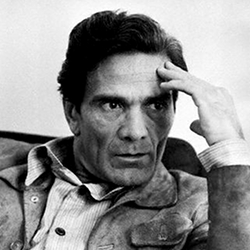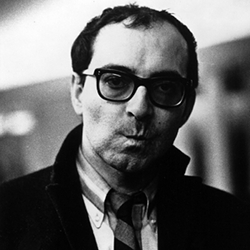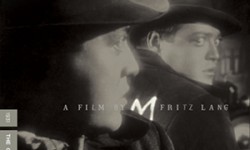
Master of the House Review

Master of the House (1925)
Cast: Johannes Meyer, Astrid Holm, Karin Nellemose
Director: Carl Theodor Dreyer
Country: Denmark
Genre: Drama
Official Site: Here
Editor’s Notes: Master of the House was released on Criterion Dual Format Blu-ray/DVD on April 22nd.
An insularly tailored domestic “comedy” with hugely reverberative implications, Carl Theodor Dreyer’s 1925 silent, Master of the House, earns its potency both acerbic and chilling primarily through innuendo, specifically in how it suggests the casualness and rampancy with which men abuse their wives. Released into a world of crumbling economic stability, the film indicted the kind of self-pitying male egos that felt entitled to the status quo – haughty patriarchs who would stratify their own family as society would workers. To evoke such lordly behavior, Dreyer uses one family, the Frandsens, as a template for what’s shown to be a ubiquitous issue of the time; his avatar for over-compensatory, limp masculinity acts as a veritable tyrant to his spouse and progeny, who spend the majority of their day evading and diffusing his bitchy tantrums.
Released into a world of crumbling economic stability, the film indicted the kind of self-pitying male egos that felt entitled to the status quo…
Although there are certainly sly and comedic moments to Master of the House, the first act, when considered, is a rather vulgar display of intra-familial oppression. Introduced through intertitles is Viktor Frandsen (Johannes Meyer), a professionally displaced household “hero” who spends the majority of his now-free time lashing out irrationally at those he should be closest to. Dreyer meticulously documents the factory-like rhythms of his household, specifically the toiling of his wife, Ida (Astrid Holm), and their two children, who all seemed doomed to forever repeat their thankless circadian duties: Dad’s slippers must not only be warmed by the furnace, but must also be placed, as if anticipating his arrival, below his chair with showroom precision; he expects the viscous, aphotic brew he calls coffee to be ready for him at the table prior to his sitting at it; and no less than gobs of artery impeding butter are to adorn his sandwich, leaving little to spare his kin. One wonders, particularly given Ida’s submissiveness, whether or not the man was ever once capable of passion and humanity, or if the conception of their children was too a cold quotidian duty – perhaps something worse. 
Taken in the context of the times, Viktor’s odious actions – which run the gamut from castigation to threats of petty violence – are emblematic of a larger issue concerning bruised masculinity and the familial fallout it accords. Of course, Dreyer has never been one to shy away from pointing out gender-based asymmetries within social institutions (The Passion of Joan of Arc, Day of Wrath, and especially, as I remember it, Gertrude), and here he grapples with the worrisome trend of more personal, household autocracy. Viktor is less an outlier, as we’re informed via text at the film’s opening, than a typification, one in a generation who lost his job and with it his identity, his civility. Such are issues of continued contemporary significance, and it’s no stretch to say that Dreyer ninety-year old portrayal of sexual politics betters much of what we see from cinema today. Moreover, curious is how Ida’s complicity is openly described as “ill”, making the film not only a harbinger for the exploration of mental illness in the medium but also a conversation starter on the symptomology of domestic abuse.
But apart from the prescient social conscious on display, much of Master of the House, to me, lacks in way of satiric or thematic amplitude, and ultimately reads as a matted tale of the what’s-good-for-the-goose variety.
But apart from the prescient social conscious on display, much of Master of the House, to me, lacks in way of satiric or thematic amplitude, and ultimately reads as a matted tale of the what’s-good-for-the-goose variety. In taking into consideration the rather embryonic state of both equality movements and cinema at the time it was made, the work is undeniably au courant. And yet, there comes a point in the second act that Viktor’s complaints become predictable and monotonous, his stamping gait seems more caricatural than menacing, and his disposition reads as increasingly and unshakably citric. Even as his former wetnurse (Mathilde Nielsen) slowly reverts him back to his long-lost gentlemanly ways – although we’re given such a unidimensional look at the character that his “former self” seems like something of an invention, a sentiment-fueled justification by those willing to tolerate his current behavior – he’s treated more as a petulant child than a fallen breadwinner, and Dreyer appears decreasingly interested in exploring the psychology of this profoundly patriarchal phenomenon; instead, Viktor is essentially given an eye-for-an-eye attitude adjustment and, in closing, taught to “man up” and treat his wife with respect – or else(!), apparently.
Transfer
Just as there are limitations as to what we can – or perhaps should – expect of human and moral play in films from the 1920’s, so too are there ceilings on how well we can reproduce their images digitally. Master of the House showcases some fine examples of texture and contour, especially in how Dreyer patently frames expressional visages, but also exudes a flickering quality as if backlit by a candle. Damage to the source prints also appear throughout the runtime, although scratches and deterioration alike are kept to a relative minimum, at least in considering the age of the film. In spite of these blemishes, this digital restoration will, if nothing else, become the promissory standard of quality with which the film can be viewed; thus is the beauty of digital preservation.
Extras
Supplemental gratuity is a bit light for this release, which is an understood concession of a film whose collaborators have died some time ago. Nonetheless, Criterion has managed to collate some informative yet succinct features that, unlike its protagonist, apprehend the concept of “enough is enough”. Both the interview with Dreyer historian Casper Tybjerg and essay by Mark Le Fanu aim to contextualize Master of the House within the filmmaker’s oeuvre, with the latter becoming more akin to a hyperbolic effusion than thematic investigation. The visual essay with David Bordwell touches on the director’s formal evolution, particularly the more experimental techniques that, in conjunction with his stances on equity, he’d eventually come to be known for.





















